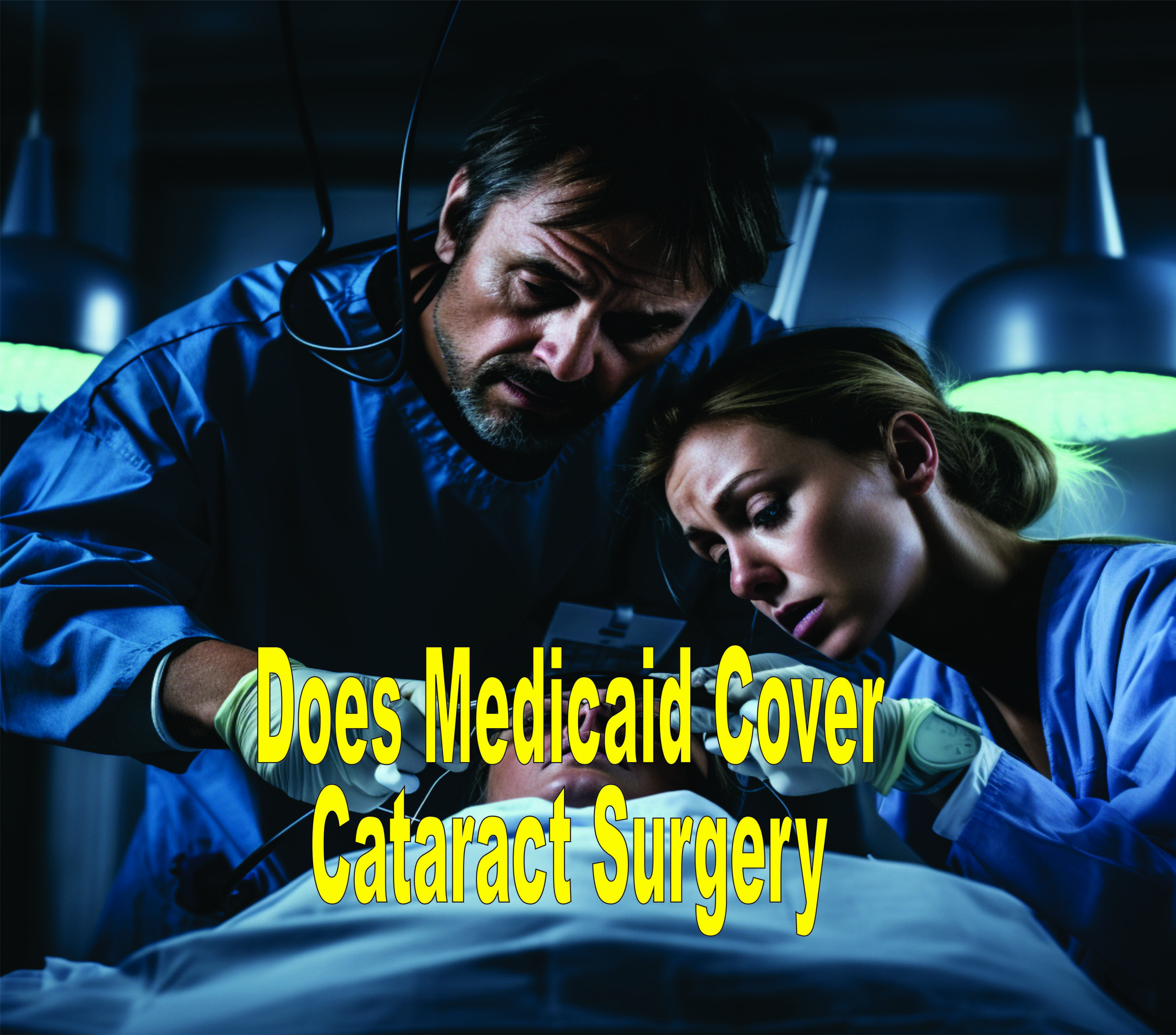Last Updated on January 25, 2024 by Lori Pace
Drawing from my own experiences navigating the healthcare landscape, it’s evident that Medicaid has become a lifeline for countless Americans seeking medical services. Now, let’s address a question that often arises: Does Medicaid provide coverage for cataract surgery? In a nutshell, the scope of vision care coverage, encompassing critical procedures like cataract surgery, emerges as an optional component that fluctuates from one state to another.
Digging deeper into the subject, it’s worth noting that Medicaid’s embrace extends to children and young adults below 21 years who meet the criteria for Medicaid vision benefits. While this is a positive stride, the terrain changes when addressing vision benefits for adults. The coverage landscape for adults can be less certain, spanning services like eye exams, essential wearables, and medically necessary procedures.
Having personally navigated the intricacies of Medicaid, it’s important to acknowledge that even with coverage in place, cataract surgery can still carry significant financial weight. Your out-of-pocket expenses under your specific Medicaid plan play a pivotal role in determining the extent of the cost. But take heart—there’s a silver lining. Private insurance entities step forward with financial aid options tailored to individuals qualifying for Medicaid, offering a much-needed cushion when considering cataract surgery.
Medicaid and Cataract Surgery
Commonly, adults aged 60 and over have cataract surgery to correct vision problems caused by cloudy lenses.
Medicaid offers some benefits that can help with vision impairment such as eye exams and eyewear, as well as cataract surgery. These benefits are available to children, adults, disabled persons, pregnant women, and those below 65 years of age.
Each state determines which vision benefits are in their plan. Medicaid covers eye exams for children and will pay for any additional costs if the checkup uncovers issues like cataracts.
However, Medicaid will not cover eye exams for adults if performed in a hospital as part of routine health checks. Besides, Medicaid will cover treatment, if an eye condition has a doctor’s diagnosis and is a primary concern.
How Can You Confirm If Medicaid Will Pay for Your Cataract Surgery?
Seeking clarity on whether your cataract surgery aligns with Medicaid’s provisions? Drawing from my own pursuit of answers, the path is relatively straightforward. Reach out to your State Medicaid office, a crucial hub of information tailored to your Medicaid plan. Here’s what they can guide you on:
- Determining your eligibility for Medicaid
- Outlining the array of plan services available to you
- Clarifying matters related to liens and third-party insurance liability
- Assisting with Medicaid claims
- Addressing concerns about a misplaced Medicaid card and its replacement
- Offering insights on how to locate doctors approved under Medicaid
- Providing updates on the status of your ongoing Medicaid application
Which Cataract Surgery Benefits Do You Receive from Medicaid?
Unpacking the range of benefits bestowed by Medicaid for cataract surgery, let’s delve into the specifics—based on my personal journey of understanding. For individuals aged 21 and beyond, the canvas of benefits unfurls as follows:
- Provision for essential eyewear—consisting of one frame and two lenses
- Inclusion of contact lenses tailored to address aphakia or cataracts
- Leverage of a Primary Care Provider (PCP) recommendation, facilitating specialized eye examinations
- Now, shifting the focus to children and young adults under 21, the coverage spectrum encompasses: Regular vision exams, a recurring offering performed twice each year
- The provision for fundamental eyewear—equipped with one frame and two lenses
- Additionally, the annual allowance extends to two frames and four lenses.
And here’s a noteworthy detail:
- Should medical necessity dictate (such as prescription changes), coverage seamlessly extends to the second pair.
- Moreover, when unique circumstances warrant, exceptions to these limits can secure approval.
How Much Does a Cataract Surgery Cost?
Peering into the realm of costs, my own journey underscores the undeniable truth: Cataract surgery comes with a notable price tag. Delving into specifics, the expenditure isn’t solely tied to the surgical procedure—it’s also intertwined with the type of lenses chosen. The landscape reveals that toric lenses, addressing astigmatism, command a ballpark figure of approximately 1500 USD per eye. Meanwhile, if the need for specialty lenses arises, brace yourself for a more substantial cost—upwards of 3000 USD per eye.
Remember that Medicaid will cover the least expensive option if your plan covers cataract surgery. If you choose expensive lenses, they may be excluded from your insurance plan. So, you may have to pay out of pocket.
Adults eligible for Medicare and Medicaid can use both benefits. Medicare would be the primary coverage for the surgery. Medicaid would take care of other expenses uncovered by Medicare. 3rd party insurance, if available, would also be there to fill the gaps left by the primary insurance plan.
In my exploration of healthcare avenues, a pertinent revelation emerged: The inclusion of supplemental vision benefits surfaces when you enlist with private US health insurance entities like United Healthcare and Blue Shield. Additionally, when financial feasibility aligns, investing in third-party health insurance can serve as an effective strategy to alleviate out-of-pocket expenses. This holds particular significance, considering the well-established fact that cataract surgery entails substantial costs.
Which Factors Affect the Cost of Cataract Surgery?
Peering into the anatomy of cost, my personal journey has illuminated the pivotal components that shape the expense tapestry of cataract surgery. These formidable factors wield influence over the final price tag:
- The nature of intraocular lenses (IOLs) residing within your eyes
- The fee structure established by the surgeon or ophthalmologist steering the procedure
- The crucial decision of whether cataract surgery unfolds on an outpatient basis
- The prospect of hospital stay post-surgery
- The cadence of pre- and post-surgery medical appointments, intertwined with prescribed medications
A maze of regional pricing disparities that add layers to the equation While these variables intricately mold the cost spectrum, it’s imperative to grasp that your Medicaid plan occupies the forefront as the driving force in shaping your out-of-pocket expenses.
Conclusion

Wrapping up this enlightening journey, it’s crucial to distill the key takeaways from my own exploration. The crux lies in the interplay of Medicaid and cataract surgery—a symbiotic relationship underscored by the nuanced realm of optional benefits.
However, it’s paramount to recognize that the coverage landscape is intrinsically tied to the state you reside in. As we embrace the possibility of Medicaid’s coverage, let’s acknowledge the fiscal reality: For regular cataract surgery, Medicaid’s umbrella extends coverage to a modest extent. This underscores the importance of understanding that certain out-of-pocket costs will still be part of the equation. To gain a comprehensive grasp of the vision care plan’s coverage nuances, consider initiating a dialogue with your trusted local Medicaid office.


